SUNGKYUNKWAN UNIVERSITY (SKKU), SEOUL, KOREA
- Mechanical Engineering Prof. Bak Moon Soo and Prof. Park Sungsu's Research Team
Develops Fast and Easy Disinfection of Coronavirus-contaminated Face Masks Using Ozone Gas - Prof. Young Hee Lee's Research Team Successfully Materializes Ferromagnetic
Semiconductors at Room Temperature - Prof. Bang Chang-hyeon's Team Develops Energy Element That Can Be Charged by Wind
- Chemical Engineering Prof. Yi GI Ra's Co-Research Team Develops Sun Blocking Material
with No White Residue - Electronic and Electrical Engineering Prof. Won Sang Min's Research Team Develops
Permanent Bioimplant High-resolution Electrocorticography Sensor - Prof. Kim Ki Hyun's Team Finds Lung Cancer and Prostate Cancer Suppression Material
from Poisonous Mushroom Gymnopilus spectabilis (Fr.) Singer

- Instant sterilization of coronavirus in one minute without sacrificing mask performance
- Expected to be used in countries with insufficient masks and medical sites that need frequent replacements
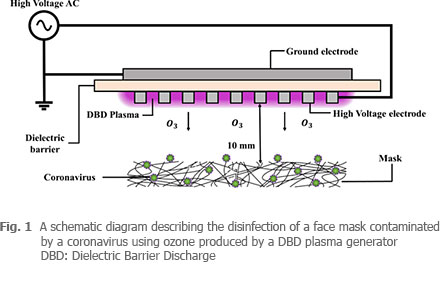
Mechanical engineering professors Bak Moon Soo and Park Sungsu's research team (including Dr. Lee Jin Yeop and Dr. Bong Cheolwoo) reported that they have developed a new technology that can be utilized in the medical field. They discovered that a high concentration of ozone gases produced by plasma generators on masks contaminated with coronavirus can kill the virus in a minute without compromising the mask's performance.
After the COVID-19 outbreak began, the researchers recognized that many countries were suffering from a lack of supply of N95 (Korea KF94) masks equipped with electrostatic filters and that the long-term use of contaminated masks also increased the infection of medical staff.
The researchers succeeded in preventing infection by 100% when the surface of a coronavirus infected mask was exposed to disinfectant ozone gas for one minute at a level of 120 ppm. The research outcome is expected to easily prevent mask contamination by not only coronaviruses but other viruses and germs at medical sites.
The researchers conducted an experiment (five times per minute, 120 ppm ozone gas exposure) on KF94 masks and their result was verified by two national certification agencies for mask performance who determined that the dust collection efficiency, which is the main performance indicator for masks, was maintained at 98%. In addition, the electrostatic filter structure of the mask was confirmed to be intact by using a scanning electron microscope. This means that masks can be recycled at least five times.
Ozone generators in the market are designed to sterilize space in the form of air purifiers. However, low-concentration ozone gases are unlikely to be effective against high-concentration viruses or bacterial sterilization. On the other hand, the team's treatment method uses low-temperature, upper-pressure plasma to generate 120 ppm of high-concentration ozone gas in the space where the mask is located to conduct sterilization. As the ozone is generated for a short period of just one minute, the amount is minimal, and the use of a plasma generator in a hood with good air circulation can prevent ozone-induced hazards.
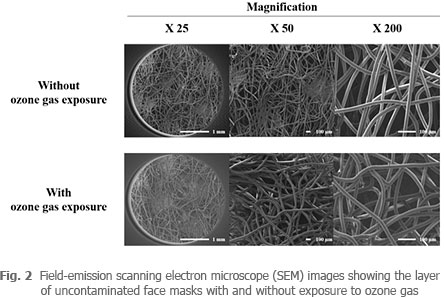
In addition, this technology can easily be used by domestic companies that produce plasma generators to sterilize masks and is expected to pioneer the market for overseas exports through the process of optimizing ozone gas exposure to masks.
The study was supported by the Ministry of Science and ICT Global Frontier Project (Director Shin Yong-beom of the BioNano Health Guard Research Group) and the BICS-KS (Biomedical Institute for Convergence-Kangbuk Samsung Hospital) Future Convergence Program.
The results of the study were pre-published on Friday, May 1st on MedRxiv, an internet site that distributes undisclosed manuscripts on health science for rapid dissemination of technology, and the paper is now under review for formal publication.
[Thesis] Fast and easy disinfection of coronavirus-contaminated face masks using ozone gas produced by a dielectric barrier discharge plasma generator
[Thesis source] https://www.medrxiv.org/content/10.1101/2020.04.26.20080317v2

Diluted magnetic semiconductors, the kind doped with impure magnetic elements, have been expected to play an important role in spintronics. They can control both charge and spin simultaneously, so the development of ultra-fast, low power, high density spintronics seems feasible.
Nevertheless, despite half a century of research, the issues of the Curie temperature (the minimum temperature at which the spins are aligned and ferromagnetic) being below room temperature and the uneven substance composition remained unsolved. If these two matters were not solved, commercialization of spintronics using magnetic semiconductors may have remained difficult.
Recently, the Center for Integrated Nanostructure Physics (Researcher Seok Joon Yun, Researcher Duong Dinh Loc, Professor Young Hee Lee) located in the Institute for Basic Science (IBS) under the Ministry of Science, ICT and Future Planning, succeeded in resolving the problems.
Using chemical vapor deposition, the research team synthesized vanadium-doped monolayer 2D Tungsten Diselenide (V-doped Wse2) and clearly saw that the Curie temperature was accessible above room temperature.
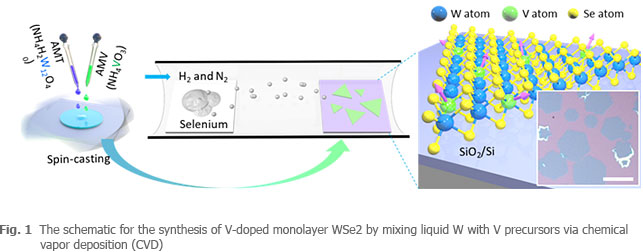
The team observed the magnetic domain of monolayer V-doped Wse2 which revealed a Curie temperature above room temperature after an analysis of the transition of the magnetic domain according to temperature and the magnetization direction. It was made possible through magnetic force microscopy (MFM), which is sensitive and can detect very small magnetic dipole moments within a nanometer.
Also, through the analysis of the atomic structure by transmission electron microscopy, it was revealed that vanadium is doped and distributed evenly on WSe2 which also resolved the old uneven element status problem. Furthermore, it was revealed that the electron density could be altered and the ferromagnetic moment could be controlled.
The diluted ferromagnetic semiconductors at room temperature produced by the research team made wafer-sized synthesis possible. As a result, it is expected to be commercialized as soon as possible.
Director Lee said, "The research proved that ferromagnetic semiconductors at room temperature can exist within a thin material at the level of a monolayer, which hadn't been discovered for the past half a century. Through the outcome of this research, we expect to bring about a breakthrough in the application of spin electronics and quantum computers."
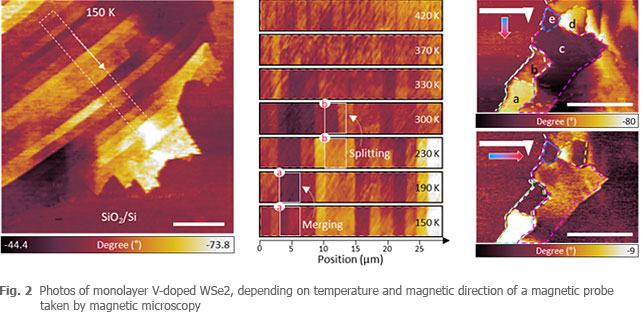
The research results were published on March 11th in Advanced Science (IF 15.804), a world-renowned scientific journal.

Professor Bang Chang-hyeon's team together with Professor Cho Seongbeom's team, developed an energy element that can efficiently use frictional electricity to charge, meaning it can be charged "just by wind". The research was published in Advanced Materials on February 13, 2020.
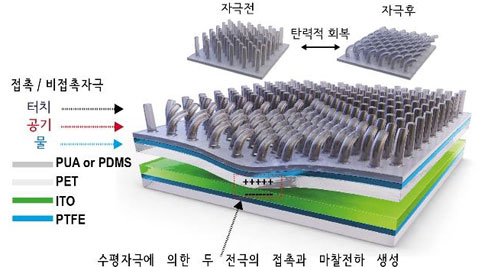
Due to recent technological developments and increased interest in energy harvesting, there has been greater need for highly-integrated minimal-electricity-usage elements. A nanite generator using frictional electricity is one example of energy harvesting. Professor Bang's team developed a Nano-scale structure that can harvest energy from forces coming from any direction. The team explained that the structure was created by imitating how hair generates static electricity via non-contact forces like wind.

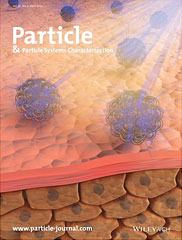 Amore Pacific Technology Research Institute reported on April 24th that they have developed a sun block that does not leave white residue and blocks UV rays effectively using porous micro material platform technology.
Amore Pacific Technology Research Institute reported on April 24th that they have developed a sun block that does not leave white residue and blocks UV rays effectively using porous micro material platform technology.
This research was a collaboration between Amore Pacific Research Institute of Technology Material Lab Dr. Lee Yeon and SKKU Chemical Engineering Professor Yi Gi Ra.
The co-research team succeeded in uniformly synthesizing and reassembling a silica spherical particle that is hollow in the middle. The team was able to prove that the film made of this particle was able to strongly repel UV light, while in a visible ray area it was able to be transparent.
The research team explained that with this new technology, when one applies there is no white residue or lumps.
Amore Pacific Technology Research Institute stated, "This is meaningful in that it has secured a platform for the technology to develop UV block materials. We shall verify the possibility for utilization through clinical tests on skin.
The research was published online in the international journal Particle & Particle Systems Characterization's March edition and was also chosen for the front page of the April edition.

- Expected to enable ground-breaking treatment and diagnosis of causes of incurable brain and heart related diseases
- Highly integrated sensor developed using ultrathin film semiconductor circuit
- Published in prestigious international journal Science Translational Medicine on April 8th (Wed)
Electronic and Electrical Engineering Professor Won Sang Min's team reported that they have developed a permanently implantable electrocorticography sensor that may last for more than 70 years. The research team placed the sensor in a brain and succeeded in getting high resolution signals from the brain using over 1,000 electrodes. This research was conducted with Yonsei University Professor Yoo Ki Joon, Duke University Professor Jonathan Viventi, and Northwestern University Professor John Rogers.
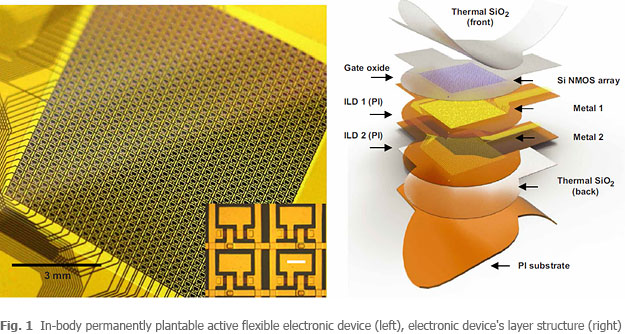
Recently, in-body plantable devices that can be placed directly into the brain and accurately measure brain waves are receiving much attention. However, the original devices' electrode number (around 100) is much smaller than the brain waves' source, which amounts to more than 10 billion neurons, so only limited information can be gathered. Also, it is difficult. and there were limitations when combining the two as a result of the brain's soft curved interface.
If a flexible and elastic material device is used, it is more advantageous when combined, but after the complicated circuit that has many electrodes has been implanted, fluids can easily infiltrate it, leading to easy breakdowns. This was considered a big problem for plantable high resolution brain wave sensors.
This research team developed a flexible electronic permanent high-resolution brain wave sensor bioimplant for the first time. The device can measure the differences in brain waves in different environments after being implanted into the brain of a primate.
Especially, a thin film structure of silica protects the device perfectly from the infiltration of fluids, and the brain wave sensor has a lifetime of over 70 years without breakdowns.
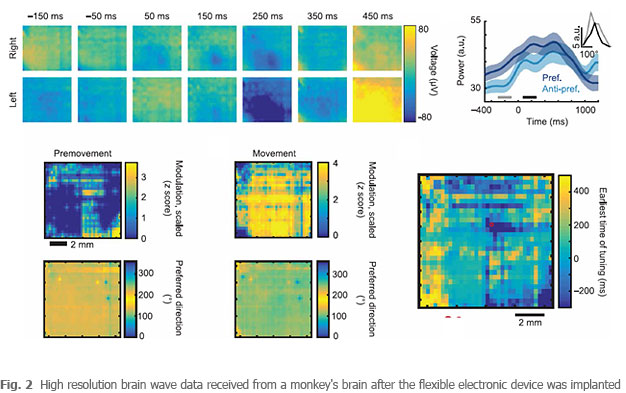
This research, for the first time in the world, materialized a bio-implantable high resolution flexible electronic device that was considered difficult to develop in the industry of brain science. Through this, it is expected to create a breakthrough in regard to diagnosing incurable brain and heart related diseases and treatments. Additionally, it is anticipated to have a significant influence on brain related research and industrial development in the future.
The results of this research were posted up in Science Translational Medicine, the most prestigious international journal in the field of convergent research, on April 8th.
[Thesis] Development of a neural interface for high-definition, long-term recording in rodents and nonhuman primates (Science Translational Medicine)

School of Pharmacy Professor Kim Ki Hyun's joint research team with the Korea Forest Research Institutes' Forest Mushroom Research Laboratory revealed a new anticancer compound that prevents lung cancer and prostate cancer's cell proliferation that comes from a hallucination inducing poisonous mushroom called Gymnopilus spectabilis (Fr.) Singer.

A new compound, sesquiterpenes, has similar effects to doxorubicin which is an anticancer drug that is widely used, thus it is expected to become a new natural anticancer compound.
The research was published in the international journal of pharmacology, Archives of Pharmaceutical Research 43rd edition.
























